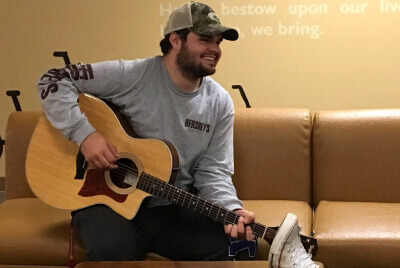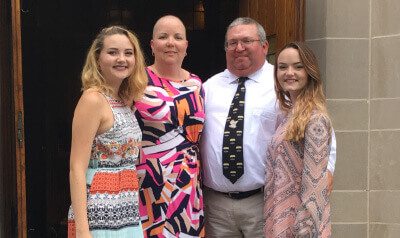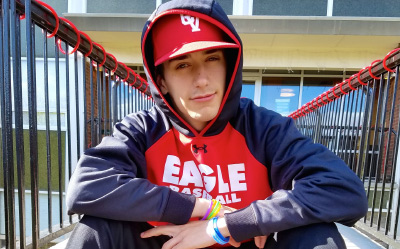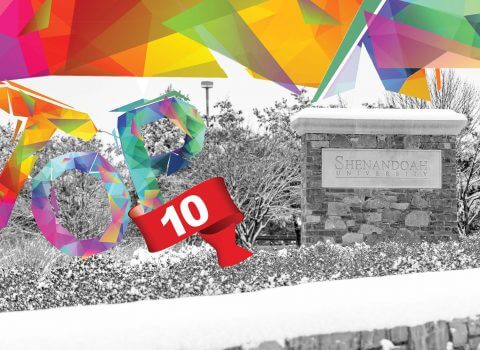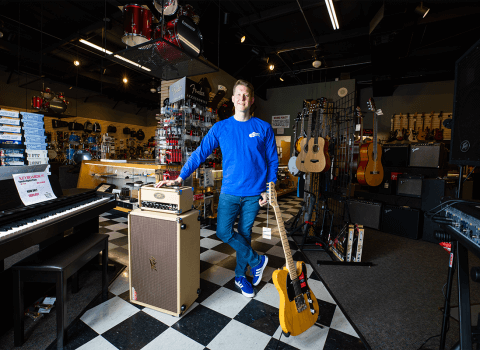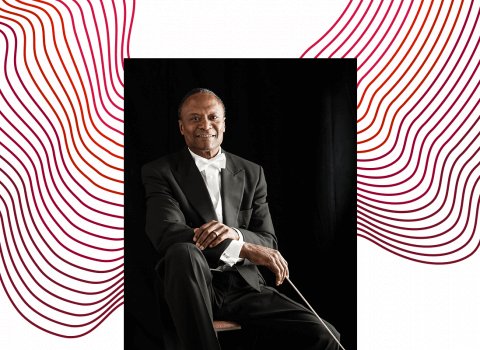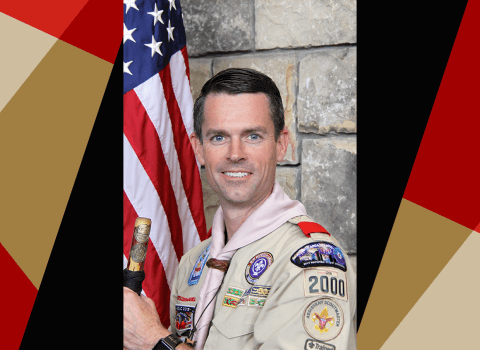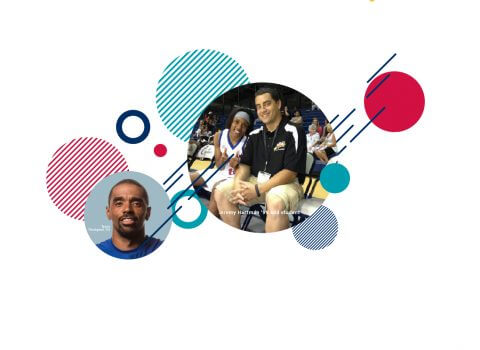Jessica Peacock’s students in the First-Year Seminar (FYS) course, “We’re All ‘Humans of New York’: Empathy and Connectedness on a Global Scale,” affectionately nicknamed the class “Quotes and Crying.”
The quotes accompanied photos and came from the people profiled on the Humans of New York (HONY), blog, as well as, over the course of the the class, their fellow classmates and students around Shenandoah’s campus. The crying often originated with Peacock, an assistant professor of exercise science, whose doctorate is in sport and exercise psychology and who also holds a master’s degree in counseling. Dr. Peacock acknowledges that she’s deeply empathetic and cries very easily, and she views her own empathy as a gift.
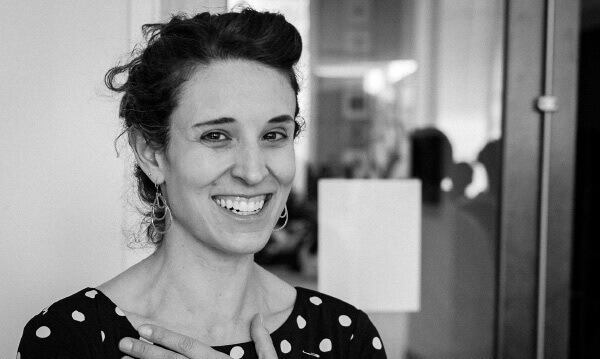
Empathy is “the truest part of our humanity,” said Peacock. “We need it, just to stay human.”
So, building empathy is important to her. “I’ve tried to find a way to work it into every class I’ve taught,” she said, and she has often used Humans of New York as her catalyst, as the blog tells people’s stories in an immediate, meaningful form, with just a photo and a quote. No names. No backstories beyond what’s provided in the quote. The stories are true snapshots of a moment in time, but one that provides an insight into another person’s life.
“From my perspective, as director of the program, this class is so special because it represents what we hope for in FYS,” said Associate Vice President for Academic Affairs and Director of General Education Amy Sarch, Ph.D. “Jessica got to teach her passion – and for professors, FYS is the the opportunity to teach outside of that professor’s curriculum, and students get to take a class that is outside of their major. Hopefully, that passion extends to their learning – which in this case, truly did.”

Peacock created the First-Year Seminar course in an effort to build empathy among Shenandoah’s newest students, with the understanding that nationally, measures of empathy among students at U.S. colleges and universities have decreased since the 1970s. When she noted this in the class, she said her students weren’t defensive about the finding at all, and instead, admitted to it.
She said they admitted to feeling bombarded with negative information, primarily via online sources, and that they “turn off” because it’s too hard to emotionally feel and respond to everything they see, all the time.
Even so, empathy did rise among her students, who took questionnaires designed to measure empathy, both at the outset of the course and its conclusion. She noted that when the students were asked why they felt their scores improved, they responded that the class helped them with learning how to listen; exposed them to people, ideas and cultures unlike their own; and improved their ability to connect with others.
The HONY blog provided a peg around which the students’ exploration of empathy turned. In the first week of class, at the direction of student mentor Taylor Butts, each student brought in a photo that revealed themselves and then engaged in an interview with a fellow classmate. That classmate then chose a quote from the interview and assigned it to the photo, to create a HONY-esque package. Peacock collected these, printed them and gave them to her students at the conclusion of another class project: “Humans of Shenandoah.” The latter required students to approach strangers on campus, take their photos and interview them, a la HONY, and then combine a photo and quote to create a meaningful package. These images and quotes were then briefly displayed in the Health & Life Sciences Building, Halpin Rotunda, at the end of the semester. To prepare, students watched videos on how HONY’s Brandon Stanton talks with people to capture both images and words.
“I did think that the students were very open, in general, on campus,” Peacock said. “We got some good stuff.”
Additionally, students heard from a variety of FYS speakers, including an AIDS activist who runs nonprofit schools in Uganda, a Shenandoah faculty member originally from Iran, the director of a refugee resettlement program and local community members assisting with the relocation of a family from Syria. They also read HONY blog entries from Uganda, Iran, and in relation to the refugee crisis, help them to better understand other cultures and their similarities and differences.
All the activities, from learning about active listening, to hearing the guest speakers and talking to strangers to understand their stories, also played a part in improving empathy, according to student assessments.
Peacock’s ultimate goal for her students was to learn something even greater than empathy – even though she holds that particular human quality in the highest esteem. “I hope that they recognize their worth as human beings … for just being who they are.”
“Out of all the mentors and teachers that have made me into the man I am today, Dr. Peacock has given me what no one else has,” said Mark Purdy, in a statement in which he, with fellow students, nominated Peacock for the First-Year Seminar Teaching Excellence Award. “She has helped me to express [myself] to those around me and has shown me the importance of taking time to get to know the person behind you, and in front of you. Dr. Peacock is not the ordinary teacher or professor you’d come across; she’s beyond that … I would recommend anyone from any walk of life to get to know this kindhearted woman. I’m eternally grateful and thankful for getting to know her. She is beyond extraordinary, inside and out.”
“I originally chose this class because I had previously read the Humans of New York blog, but I never thought about the impact that one person’s story can have on many others,” added another student, Meredith Chang. “Dr. Peacock is also someone who I can go to with any kind of problem, and she is always willing to help.”
Peacock won the award, given to a FYS professor who inspires students to achieve beyond what they believe they are capable of, embodies a creative teaching style and builds a sense of community in the classroom.
And what happened when she was presented with the unexpected honor in December? You might be able to guess. “I started crying,” Peacock recalled, just moments before a warm smile lit her face.
Peacock has helped me to express myself to those around me and has shown me the importance of taking time to get to know the person next to you. — Mark Purdy

